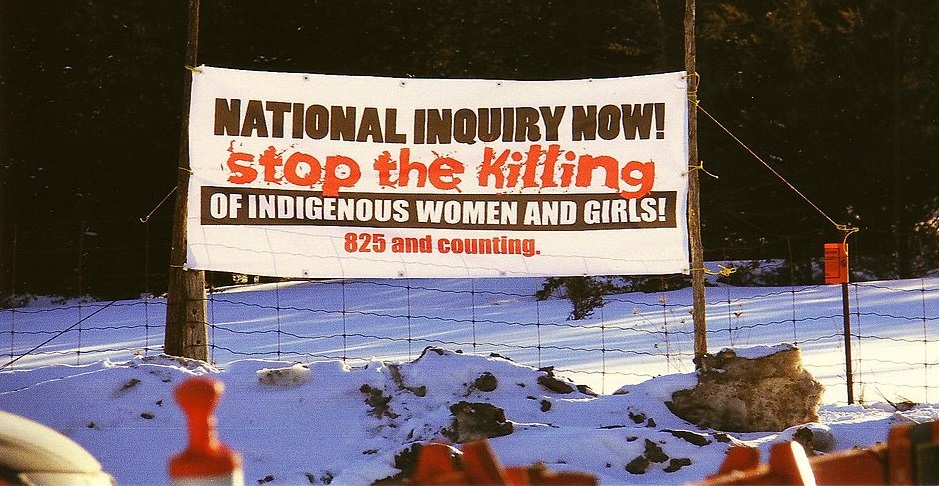Canadian law students are reporting for JURIST on national and international developments in and affecting Canada. Mélanie Cantin is JURIST’s Chief Correspondent for Canada and a rising 3L at the University of Ottawa.
Last Saturday, June 3, marked four years since the final report of the National Inquiry into Missing and Murdered Indigenous Women and Girls (“National Inquiry”) was released in Canada. The federal government acknowledged the landmark by releasing a progress report on its efforts to address the final report’s calls for justice, as well as its plans to continue doing so in the coming year.
The National Inquiry was officially established in 2016 to study the disproportionate levels of violence suffered by Indigenous women, girls, and 2SLGBTQ+ folks in Canada. Specifically, the National Inquiry was tasked with uncovering “the systemic causes behind the violence that Indigenous women and girls experience” and studying the roles of institutions like “policing, child welfare, coroners and other government policies/practices” in this ongoing victimization.
In 2019, the National Inquiry released its powerful final report which details its findings. Notably, the report concluded that “Indigenous women and girls are 12 times more likely to be murdered or missing than any other women in Canada” and that between 2001 and 2015, “homicide rates for Indigenous women were nearly six times higher than for non-Indigenous women.”
The report describes the various ways in which systemic oppression based on race, gender, and Indigenous status has contributed to this problem, and that fully dismantling colonialism in Canada is necessary to begin addressing this problem. The National Inquiry points to specific legislative issues as sources of continuing legal and political deprivation for Indigenous women and girls, such as the federal government’s unwillingness to fully implement various international treaties regarding Indigenous people and its insistence on continuing to abide by the colonial structures laid out in the increasingly controversial Indian Act. These findings and the National Inquiry’s 231 calls for justice can be found in the final report itself, as well as summarized in its executive summary.
In the years following the publication of the final report, the Canadian federal government has attempted to follow the calls for justice by creating the Federal Pathway to Address Missing and Murdered Indigenous Women, Girls and 2SLGBTQQIA+ People (“Federal Pathway”). The 2022-2023 progress report of the Federal Pathway details various initiatives meant to promote Indigenous rights and well-being in Canada, such as increased funding to Indigenous-led community safety projects, the continuation of a national shelter and transitional housing strategy, and funding for Indigenous language programs. An executive summary of the progress report can be found here.
Various provinces have also stepped in to provide funding for initiatives meant to promote the National Inquiry’s calls for justice. Most recently, the province of Saskatchewan announced that additional funding would be going towards Indigenous-focused housing and counselling services throughout the province, as well as to family violence intervention programs in various Indigenous communities.
Still, according to an analysis completed by the CBC, “only two of the 231 calls have been completed―and more than half haven’t even been started.” It can be difficult to put an exact number on progress, or even on the completion of a given call for justice, and many of the statistics cited in the National Inquiry’s final report remain the most up to date available today.
However, those which have been updated continue to reflect the ongoing suffering of Indigenous women and girls in Canada. As of 2020, the homicide rate for Indigenous women remains “more than five times that of non-Indigenous women” and from 2015 to 2020, the homicide rate among Indigenous victims generally (men and women) was “six times higher than the rate for non-Indigenous people during the same period.” Data on the victimization rates suffered by 2SLGBTQ+ Indigenous people specifically remains too scarce to draw clear conclusions, a gap in the literature that the National Inquiry’s final report itself has called on the federal government to rectify in future statistical analyses.
Statistics aside, Indigenous people in Canada have themselves expressed frustration with the way the federal government has handled the issue since the National Inquiry’s final report. Notably, with the slow progress on the calls for justice, many worry that the final report “will end up shelved along with other government reports” and that it will fall out of the public consciousness as others have in the past. It is therefore crucial to continue holding the government to account in this respect.


